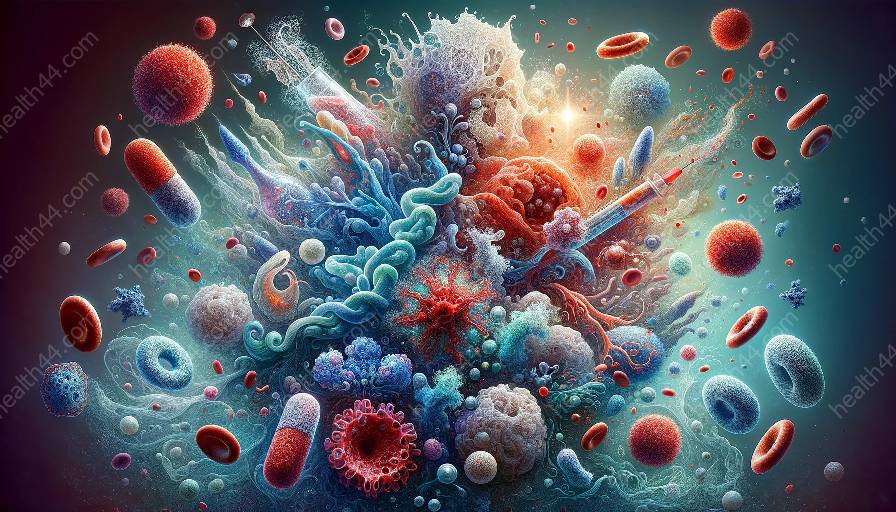As the body's defense system, the immune system is comprised of a diverse array of cells working together to protect against harmful pathogens. Immune cell types and their functions are essential components of the complex processes of immune response and immunology. Understanding the roles of different immune cell types enriches our appreciation of the sophisticated defense mechanisms that safeguard our health.
The Basics of Immune Cell Types
Immune cells can be broadly categorized into two main groups: innate immune cells and adaptive immune cells. Innate immune cells, such as macrophages, natural killer cells, and dendritic cells, provide rapid, nonspecific responses to pathogens. Adaptive immune cells, including T cells and B cells, offer a more targeted and sustained defense. Both types of immune cells are integral to mounting effective immune responses.
Macrophages
Macrophages are key immune cells that engulf and digest foreign substances, dead cells, and debris. They also play a crucial role in presenting antigens to other immune cells, initiating and coordinating immune responses against specific threats.
Natural Killer Cells
Natural killer cells are part of the innate immune system and are specialized in identifying and destroying infected and cancerous cells. Their ability to recognize and eliminate abnormal cells is vital for preventing the spread of diseases.
Dendritic Cells
Dendritic cells are antigen-presenting cells that bridge innate and adaptive immunity. They capture and process antigens from pathogens and display them to T cells, prompting the activation of specific immune responses and the generation of immunological memory.
The Versatility of Adaptive Immune Cells
T cells and B cells are major players in the adaptive immune system, contributing to immunological memory and targeted responses against specific pathogens.
T Cells
T cells can be further classified into cytotoxic T cells, helper T cells, and regulatory T cells. Cytotoxic T cells directly attack and destroy infected or abnormal cells, while helper T cells coordinate immune responses and modulate other immune cells. Regulatory T cells maintain immune tolerance and prevent autoimmune reactions.
B Cells
B cells are responsible for producing antibodies, which bind to specific antigens and mark them for destruction by other immune cells. B cells are crucial for the humoral immune response and the establishment of immunological memory.
Collaborative Functions in Immune Response
Immune cells interact and collaborate in numerous ways to orchestrate effective immune responses. Cooperation between different cell types is essential for recognizing and neutralizing diverse pathogens while minimizing collateral damage to the body's own tissues.
Recognition
Immune cells recognize pathogens through specialized receptors that detect specific molecular patterns associated with microbial threats. This recognition triggers a cascade of responses aimed at eliminating the invaders.
Communication
Communication among immune cells is crucial for coordinating complex immune responses. Signaling molecules, such as cytokines, enable immune cells to regulate their activities, direct immune responses, and recruit other cells to sites of infection or inflammation.
Memory Formation
Through the generation of memory cells, the immune system develops long-term protection against previously encountered pathogens. This memory allows for faster, more robust responses upon re-exposure to familiar threats, contributing to immunity and vaccination strategies.
Implications in Immunology
The study of immune cell types and their functions forms the foundation of immunology—a field dedicated to unraveling the intricacies of the immune system to improve human health. In immunology, researchers investigate the behavior of immune cells, the development of targeted therapies, and the design of vaccines to enhance immune responses.
Therapeutic Applications
The knowledge of immune cell types and their functions has led to breakthroughs in the development of immunotherapies for cancer, autoimmune diseases, and infectious conditions. These therapies leverage the body's own immune cells to combat diseases, revolutionizing treatment options for various medical conditions.
Immunotherapy
Immunotherapies, such as checkpoint inhibitors and CAR-T cell therapies, harness the power of immune cells to target and eliminate cancer cells. The success of these approaches highlights the potential of understanding immune cell types and their functions in transforming medical practices.
Conclusion
Immune cell types and functions lie at the core of the body's remarkable defense system. Their intricate roles in immune responses and immunological processes illustrate the extraordinary capabilities of the immune system. By delving into the world of immune cells, we gain a deep appreciation for the complexities and potential of immunology, ultimately paving the way for innovative advancements in medical science.


